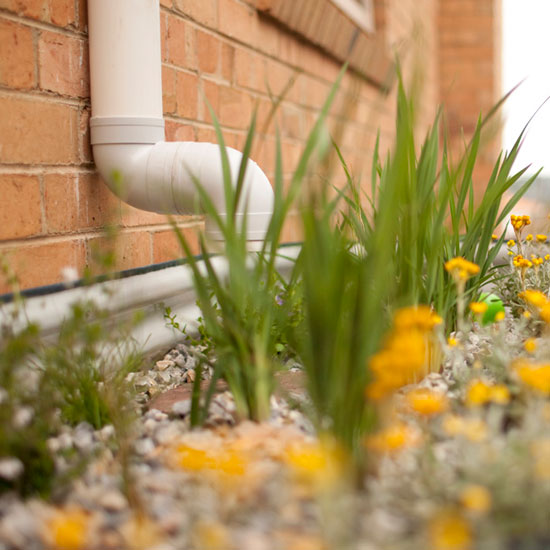Clean and green – how to build a raingarden
Index
From river-bed inspired rock gardens to grassy swales, there are countless ways to incorporate a raingarden to create a wetland wonder in your garden.

Understanding sustainability has led to lots of changes in the way we design our homes and gardens. We’ve installed solar panels on our roofs and water tanks in our gardens, and we use water tanks to reuse rainwater in our bathrooms and laundries.
But stormwater runoff is a big issue for our water suppliers, especially during flash floods. Every downpour, millions of litres of stormwater run down our roofs, over our lawns, across our oily driveways and down our roads. Eventually the water and the pollution it carries – including oil, fertilizers, pesticides, litter and animal droppings – is dumped into our local creeks and waterways.
This has a huge effect on our urban waterways. The flood of water erodes creek banks, and the pollution damages aquatic plant and animal life.
Creating a raingarden is one way you can help. Diverting your gutter water away from the stormwater drains and into a raingarden lets the water be naturally filtered before it drains into the soil or into the stormwater system -cleaned and free of contaminants.
There are different types of raingarden you could construct. Do you want to harvest the water that flows down your driveway? Does your rainwater tank regularly overflow? Is there a down pipe attached to the house that you’d like to divert to a raingarden? Here are some of the options:
Different types of raingarden
- Planter box: placing a planter box alongside a diverted roof downpipe or water tank overflow pipe allows stormwater to filter through the raingarden before connecting to the stormwater system.
- Inground: Dig out an area that you can divert runoff from hard surfaces or a roof downpipe into. A perforated pipe then channels any excess water back into the stormwater system.
- Infiltration: Dig out a hole in the ground, but instead of connecting it back to the stormwater system, the water is allowed to filter into the soil.
- Swale: A swale is a landscaping term for a hole, with a mound of soil on its side. When it rains, it will fill with stormwater, which filters into the mound. The swale can be grassed or planted up.
Building your raingarden
Depending on the style of raingarden you have decided to build, there are a few fundamentals to follow.
First of all, if you want to build a raingarden such as an inground, infiltration or a swale, it needs to slope away from the foundations of your house.
Raingardens that connect to the stormwater system, such as the planter box and inground systems need to be lined with PVC. Plus, they should connect to the stormwater system via a perforated pipe. You might need an overflow pipe to allow for excess water during heavy rainfall.
To cope with really heavy rainfall, incorporate a d-shape mechanism into your downpipes. It will allow water to drain to the raingarden, but in the event of a downpour the excess water can be diverted into the stormwater system.
Adding the soil
Cleaning stormwater via your raingarden needs a filter of several layers of soil materials. On the bottom layer you need a layer of gravel, followed by a layer of sand. Then a deep layer of sandy loam for the plants to grow in. Finally a layer of gravel or pebbles on the surface protects the plant roots from drying out, and stops soil erosion. These layers act as a filtration system for the stormwater.
Choosing plants
When choosing plants for your raingarden, be sure to choose plants that can cope with heavy rains as well as long periods of dry weather -luckily many Aussie plants are perfectly adapted to do this. It’s a great opportunity to incorporate some native and indigenous planting into your gardening scheme. Your local nursery will be able to help you with plant selection.
For more advice on constructing a raingarden at your home, and for materials and supplies, contact your local nursery today. With more than 6000 nurseries listed right around Australia, Yellow Pages can help you find a local expert to help you create your own raingarden while helping to protect our creeks and waterways.
